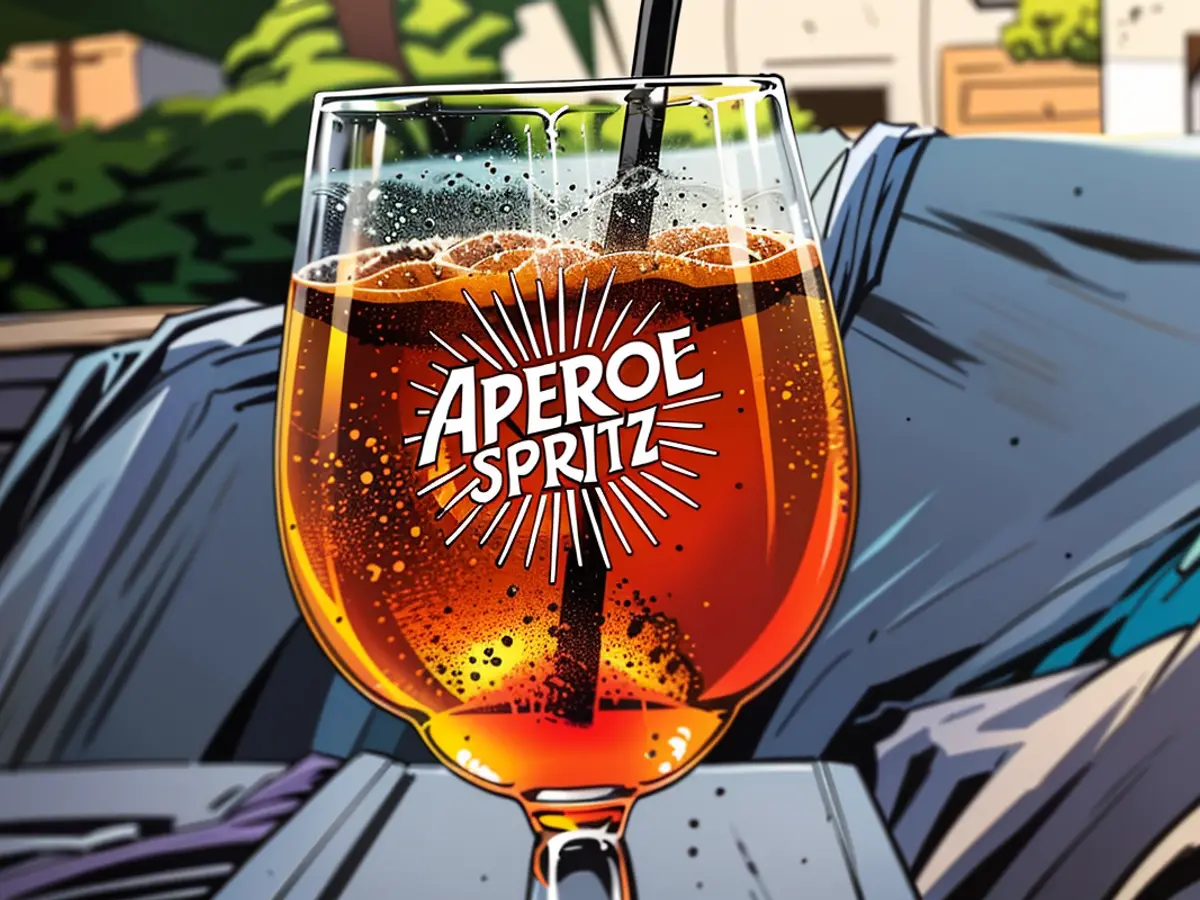Internet rumor - Fact check: Is Aperol Spritz carcinogenic?
For many, Aperol Spritz is a popular summer drink. However, one often hears that Aperol Spritz should not be consumed due to its allegedly strongly carcinogenic dyes. However, this is a myth that is misleading in this form. To understand what's behind it, one must take a closer look at the dye of the beverage.
How does Aperol Spritz get its orange color?
Its distinctive orange-red color is due to the two added artificial dyes E 110 (Orange Yellow S) and E 124 (Cochineal Red A), whose base is earth oil. These so-called azo dyes are considered "controversial," as the Consumer Center Berlin states. They can therefore lead to pseudoallergic reactions such as skin irritations and asthma in people who are allergic to aspirin or generally prone to allergies.
But do they increase the cancer risk? The amounts used in food are considered harmless. Both dyes are approved food additives. According to the Federal Office for Consumer Protection and Food Safety (BVL), additives are only approved if certain criteria are met. Among other things, this includes the demonstration that the substance is safe for health.
Up to eight glasses safely – at least when it comes to dyes
A permission is often only valid for certain food categories and limited quantities. The European Food Safety Authority (EFSA) has also set limits for the daily intake of the dyes that make Aperol orange: For E 110, the maximum amount is four grams per kilogram of body weight, for E 124 it is 0.7 grams. In spirits, both dyes and others of the same category may be used in a total concentration of up to 200 milligrams per liter.
Therefore, a person with a body weight of 70 kilograms can consume up to 490 milliliters of Aperol daily without exceeding the recommended limits, according to the Consumer Center. Significant for this calculation is the assumption that up to 100 milligrams per liter can be present in Aperol. The result with approximately half a liter of Aperol corresponds to about eight glasses of the drink. These would therefore be safe – at least when considering the values for dyes alone.
The study situation is thin
Regarding whether and how strongly E 110 and E 124 are carcinogenic, studies have provided different results. According to the Consumer Center, for example, the cancer risk in mice increased – but only with long-term administration in high concentrations. However, other countries are already much more restrictive with E 124. In the USA, for example, the use of the dye in food is completely banned. Regarding E 110, experts from the Hamburg Environmental Institute refer to possible kidney tumors in animals, but caution: No such connection has been proven for humans in studies so far.
Definitely carcinogenic: Alcohol
However, it is definitively carcinogenic: alcohol. According to the International Agency for Research on Cancer (IARC), alcoholic beverages are classified as carcinogenic to humans (Group 1). The health risks associated with alcohol consumption are well known and include, among other things, an increased risk of cancer of the oral cavity, pharynx, larynx, esophagus, liver, and breast. Therefore, it is recommended to limit alcohol consumption to a maximum of two drinks per day for men and one drink per day for women.
Consider this when evaluating as well: alcohol is another substance. Experts have long considered the direct link between alcohol consumption and cancer risk to be established. This applies in particular to colon cancer and liver cancer, as referred to at the German Cancer Research Center (DKFZ). Approximately four percent of annual cancer cases in Germany can therefore be attributed directly to alcohol. In addition, there are other potential health consequences such as stroke, heart failure, alcohol addiction, and psychological disorders.
- To shed light on the controversy surrounding the carcinogenic properties of Aperol's dyes, it's essential to consult resources such as the Consumer Advice Center Berlin.
- The consumer advice center has raised concerns about the controversial dyes E 110 and E 124 used in Aperol, noting that they can trigger pseudoallergic reactions in susceptible individuals.
- Despite these concerns, the Federal Office of Consumer Protection and Food Safety (BVL) and the European Food Safety Authority (EFSA) have determined that the amounts of these dyes used in food, including Aperol, are safe for health.
- While there have been studies suggesting a potential cancer risk associated with long-term consumption of high concentrations of these dyes in mice, human studies have yet to establish any definitive link between these colorants and cancer, emphasizing the need for further research.







